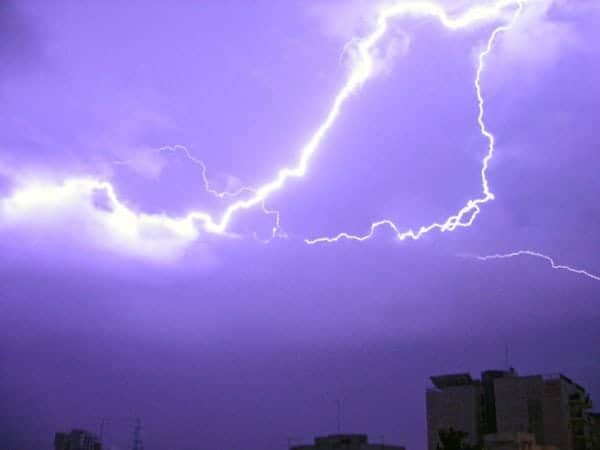A week ago today, in the wee hours of Friday, June 22, we had a humdinger of a thunder and lightning storm that lasted for hours. If that storm didn’t wake you up, then you are one mighty sound sleeper. Either that or you were comatose. Although you could have been both.
Luckily, I was out at my cabin sleeping beside an open window and the storm passed overhead. So, I got to hear and witness the full sound and fury of the storm. It was mighty impressive. There was some sky to ground lightning and a lot of intra-cloud or sheet lightning. So not only were there mighty claps and peals of thunder, but great waves of rolling thunder that traversed the sky going from horizon to horizon. A rather noisy night indeed.
If lightning bothers you, think of it as a spark in the sky. A mighty big spark but still just a spark. It is like the spark that goes across your car's spark plug and explodes the gas, which drives your engine. Or like the spark you get in the middle of winter when you build up a static charge and then reach for a doorknob or a light switch and you get zapped.
Those little sparks can hurt, which is why you don’t want to get hit with an enormous sky spark. The sky sparks or lightning bolts can go from the clouds to the ground, the ground to the clouds, from cloud to cloud or travel inside the same cloud. Good thunder and lightning storms usually occur during hot summer weather, when the air has a lot of turbulence and the clouds are getting all shook up.

The theory is that little ice particles in the clouds bang together creating positively and negatively charged particles. The negative bits go up to the tops of the clouds and the positive to the bottom. When they get charged enough the spark jumps between them. This in turn creates a great big flash of light, a tremendous boom of thunder and sends shock waves through the clouds which shake things up and create even more charged particles. So once a thunderstorm gets rolling, it feeds upon itself creating more and more sky sparks.
Sometimes when a thundercloud goes by you can actually feel your hair stand on end from a corresponding ground charge moving along with it. That can be a little scary. After a close blast of lightning, you can smell the ozone released which certainly heightens your senses.
Some people enjoy a good storm because it shows you the awesome power of nature. It is a bit of an adrenalin rush that can make you feel alive. Others are not so impressed and would rather hide from a storm. I had an aunt who didn’t like thunderstorms, so she fixed up her own thunder proof room. It was in a closet in the center of her house. She had a comfortable chair, a big flashlight with extra batteries, a few good books to read, water and some snacks.
When she heard a storm coming she went to her thunder room and wouldn’t come out until someone told her it was all clear. I never did find out whether she was afraid of the lightning or the thunder but either way she just wanted to avoid them.
I don’t suppose anyone wants to be hit with a lightning bolt because it could be a deadly experience. But I reckon if a bolt is going to hit you it really doesn’t matter whether you are looking at it or not, so you might as well enjoy the show. If someone could figure out how to capture the heat and energy of a good lightning bolt or thunder storm you could certainly replace a lot of traditional energy forms. That one thunder storm that passed through probably had enough energy in it to service the NWT for several decades.
When a bolt of lightning happens there is a big flash of light. Light travels at 299,000 kilometres per second so you see it almost instantaneously. Sound travels at 332 metres or 1,088 feet per second. So, if you count off the number of seconds between the flash and the sound you can tell how far away the lightning bolt was. One Yellowknife NWT, Two Yellowknife NWT, etc. That may help you feel safer, unless of course you don’t even get to finish saying… one.
Near misses would count as a very startling or scary occurrence, but I think it is safe to say, they are infinitely better then a direct hit. Stay safe as the summer unfolds.